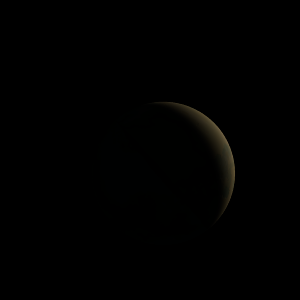|
|
Space Astro
|
Info for exoplanet "Aeka'kalke-cal"
| Scientific (actual) data |
|---|
| Name | Kepler-1976 b |
| Planet status | Confirmed |
| Radius | 1.09 |
| Orbital period | 4.95932 |
| Semi major axis | 0.0565 |
| Orbit eccentricity | 0 |
| Inclination | 86.15 |
| Discovered | 2017 |
| Updated | 2024-06-28 |
| Tzero tr | 2455010 |
| Impact parameter | 0.831 |
| Temperature (kelvin) | 1103 |
| Publication | Announced on a website |
| Detection type | Primary Transit, TTV |
| Radius measurement type | Primary Transit |
| Alternate names | KOI-760 b, KOI-760.01 |
| Star name | Kepler-1976 |
| Right ascension | 292.17° |
| Declination | 48.73° |
| Mag v | 15.44 |
| Mag i | 15.069 |
| Mag j | 14.123 |
| Mag h | 13.815 |
| Mag k | 13.8 |
| Star distance | 1314.51 |
| Star metallicity | 0.08 |
| Star mass | 1.02 |
| Star radius | 1.062 |
| Star sp type | G2V |
| Star age | 0.3 |
| Star temperature | 5734 |
| Star alternate names | KIC 11138155, KOI-760, 2MASS J19284009+4843393 |
| Wikipedia article | Kepler-1976 b |
Back
| |
| Fictional info (?) |
|---|
| Suggested name | Aeka'kalke-cal |
| Planet type | Hot planet |
| Its orbital period around Kepler-1976 of 5 earth days is the shortest of all the planets in its solar system.
The planet telescopically displays the complete range of phases, similar to Venus and the Moon, as it moves in its inner orbit relative to Kepler-1976, which reoccurs over the so-called synodic period approximately every 70 days.
The outer atmosphere is visibly segregated into several bands at different latitudes, resulting in turbulence and storms along their interacting boundaries.
problematic journey. |
| Atmosphere | Carbonyl sulfide | 92% |
| Hydrogen peroxide | 7% |
| Ozone | 0.013% |
| Sulfur dioxide | 0.00084% |
| Carbon dioxide | 0.00015% |
| Atmospheric pressure | 0.0019 bar |
 |
| No known satellites |
| Google search for Aeka'kalke-cal |
|
Website by Joachim Michaelis
|
|
|
|